Our Story
Early 2000's
While working in urban real estate development in the early 2000’s, Rachel Toker saw firsthand how governments, urban planners, and real estate developers were creating cities that separated people from native ecosystems. Green spaces consisted of highly-manicured grass, sparsely planted trees, and beds of non-native flowers. Cities and suburbs were rapidly replacing nature not only with buildings, but with a set of tightly controlled, imported landscapes, destroying local wildlife and natural cycles in the process: the whole ecosystem was deteriorating, even in cities with robust environmental advocacy efforts and despite active efforts to contain urban sprawl. Rachel observed how pushing nature outside of cities left both the natural world and people worse off.
2013
In 2013, as environmental problems continued to worsen, she looked around at environmental advocacy in urban areas. There were people working in stormwater management, in pollinator protection, in green building design and so on, but everyone was looking at their specific issue. No one was talking about the whole ecosystem or humans’ proper place within it. She started to wonder, what does a healthy natural ecosystem look like when it contains a city? How can we move beyond neat rows of trees and patches of grass, which don’t provide meaningful habitat or rebalance natural cycles? And how can those of us living in urban spaces incorporate ourselves and our built environments into a healthy natural ecosystem?
After all, we all rely on healthy ecosystems to provide us with essential ecosystem services like clean air, clean water, stormwater management, and food, whether we realize it or not. Rachel saw that, while environmental advocates were focused on addressing the symptoms of failing ecosystems, we were killing the underlying systems themselves. Urban land use, building designs, and landscaping practices were destroying nature’s most basic functions. If we allow ecosystems to fail, fights for clean air and clean water will fail, as will the fight against climate change. How healthy will we be in 100 years, if we continue to treat nature as if we live outside of – and independently from – it?
After all, we all rely on healthy ecosystems to provide us with essential ecosystem services like clean air, clean water, stormwater management, and food, whether we realize it or not. Rachel saw that, while environmental advocates were focused on addressing the symptoms of failing ecosystems, we were killing the underlying systems themselves. Urban land use, building designs, and landscaping practices were destroying nature’s most basic functions. If we allow ecosystems to fail, fights for clean air and clean water will fail, as will the fight against climate change. How healthy will we be in 100 years, if we continue to treat nature as if we live outside of – and independently from – it?
The main questions became:
- How can we live within natural ecosystems while ensuring they remain healthy?
- How do we grow and green our cities at the same time?
- How do we stop seeing natural space as an economic cost, and instead view it as an asset that produces economic value?
2014
With the questions above, Rachel founded UER in 2014 to help homeowners and communities in the DC area preserve or create parts of a healthy ecosystem within the urban setting. Answering these questions is what guides UER’s mission and projects today. We bring nature back into cities and allow it to thrive. We believe we can reverse ecosystem destruction and heal it through restorative efforts.
Present
UER is unique in that we start by looking at the environment as a whole. The human body is made of different systems that all play a role in, and are part of, our overall health. Let’s look at nature the same way and restore the systems that nature relies on for its own health and well-being. Rachel developed the concept of Eco-Functioning Spaces to help us do that, where we restore the natural relationships between biodiverse flora and fauna that are the basis for a healthy ecosystem.
At UER, we take people through each step of the process of transforming their piece of property into an Eco-Functioning Space and working to conserve it for tomorrow. Find out how we work with homeowners, other landowners, and associations who want to make a difference.
The solutions are not complicated. At UER, we believe that, collectively, we will manifest what we aspire to. Let’s stop looking for ways to reduce the damage we do, and instead look at how we can do the most good with what we have. We can all make a difference, one small patch of earth at a time.
At UER, we take people through each step of the process of transforming their piece of property into an Eco-Functioning Space and working to conserve it for tomorrow. Find out how we work with homeowners, other landowners, and associations who want to make a difference.
The solutions are not complicated. At UER, we believe that, collectively, we will manifest what we aspire to. Let’s stop looking for ways to reduce the damage we do, and instead look at how we can do the most good with what we have. We can all make a difference, one small patch of earth at a time.
Follow us on our social media platforms
